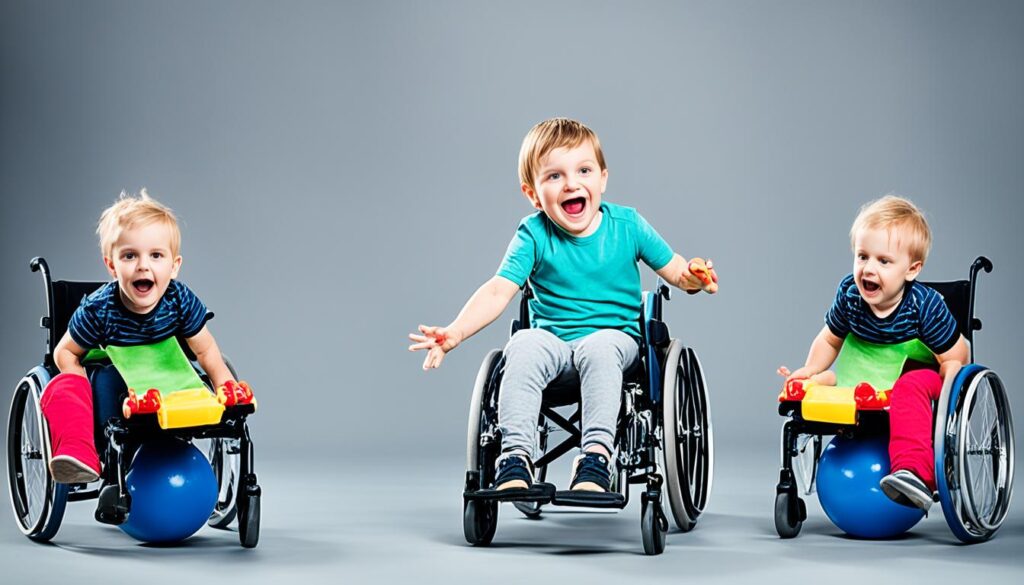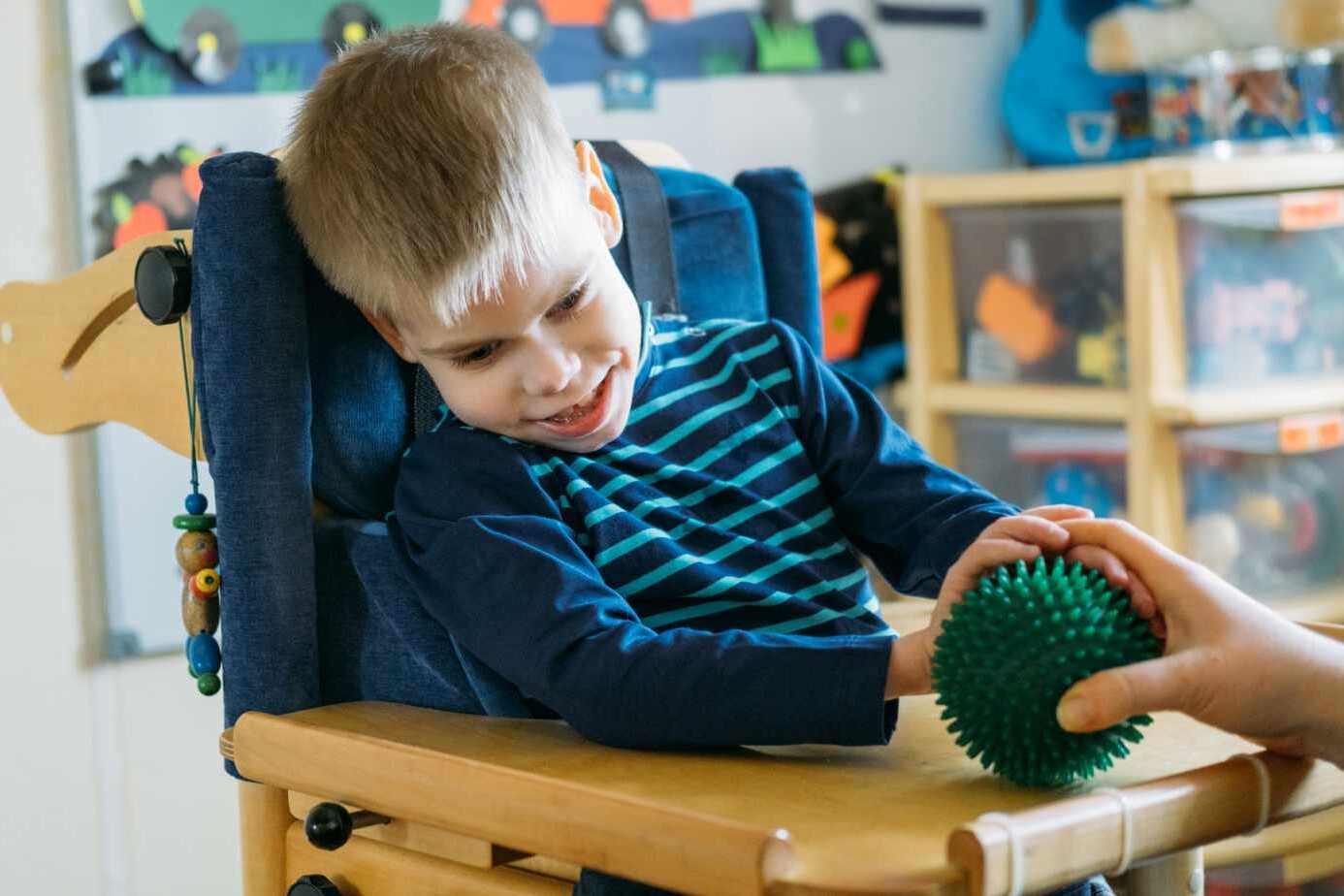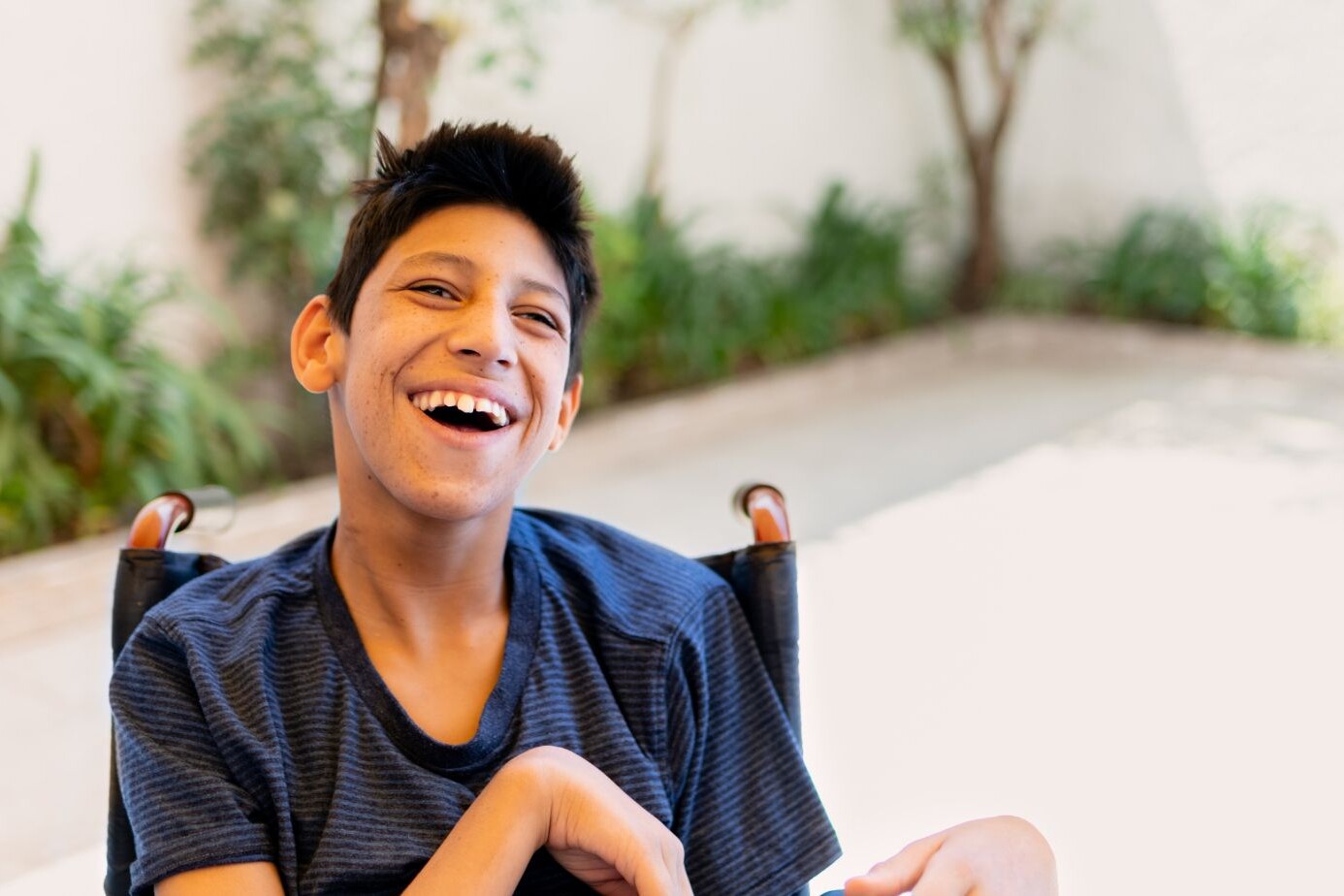There are various factors that can contribute to the development of cerebral palsy. These include irregular brain development, damage to the brain, lack of oxygen to the brain, and infections during pregnancy. Additionally, genetic conditions, premature birth, low birth weight, and birth complications can also increase the risk.
To better understand the cerebral palsy cause and its impact on individuals, continue reading through the sections below. In the following sections, we will discuss the symptoms, risk factors, prevention, and different types of cerebral palsy, providing you with a well-rounded understanding of this condition.
Before we proceed, let’s take a moment to visualize the complexity of cerebral palsy. Have a look at the image below:
Now, let’s delve deeper into the signs and symptoms of cerebral palsy in Section 2.
Table of Contents
ToggleSymptoms of Cerebral Palsy
When it comes to cerebral palsy, symptoms can vary greatly from person to person. However, there are some common signs that can help identify the condition. Here are the key symptoms to look out for:
- Trouble with movement and coordination: People with cerebral palsy often experience difficulty controlling their muscles, leading to problems with mobility and coordination.
- Speech and eating difficulties: Cerebral palsy can impact the muscles involved in speech and eating, causing difficulties in communication and swallowing.
- Delayed motor skills milestones: Children with cerebral palsy may reach developmental milestones, such as crawling, sitting, and walking, at a later age than their peers.
- Learning disabilities: Many individuals with cerebral palsy may struggle with learning and retaining information, leading to academic challenges.
- Intellectual disabilities: Intellectual disabilities can be present in some cases of cerebral palsy, affecting cognitive abilities and overall intellectual functioning.
- Seizures: Seizures are a common symptom associated with cerebral palsy. These sudden electrical disturbances in the brain can cause convulsions or temporary changes in consciousness.
- Vision and hearing problems: Impairments in vision and hearing can occur in individuals with cerebral palsy, impacting their sensory perception.
- Bladder and bowel issues: Cerebral palsy can affect the muscles responsible for controlling the bladder and bowels, leading to difficulties in urinary and bowel functioning.
The severity of these symptoms can range from very mild to severe, depending on the individual and the extent of their condition. It is important to note that not every person with cerebral palsy will experience all of these symptoms, and the specific combination and severity can vary.

Understanding the various symptoms of cerebral palsy is crucial for early detection, diagnosis, and appropriate management of the condition. In the next section, we will explore the risk factors and potential prevention strategies for cerebral palsy.
Risk Factors and Prevention of Cerebral Palsy
Several risk factors can increase the chances of a child developing cerebral palsy. These include:
- Low birth weight
- Premature birth
- Multiple births
- Maternal infections during pregnancy
- Jaundice and kernicterus
- Medical conditions of the mother
- Birth complications
While cerebral palsy cannot always be prevented, there are steps that can be taken to reduce the risk:
- Maintaining good maternal health before pregnancy.
- Getting vaccinated against certain diseases.
- Seeking early and regular prenatal care.
- Preventing infections during pregnancy.
- Taking precautions to prevent injuries after the baby is born.
By addressing these risk factors and taking appropriate measures, it is possible to reduce the chances of a child developing cerebral palsy.
| Risk Factors | Prevention Strategies |
|---|---|
| Low birth weight | Ensuring proper prenatal nutrition and healthcare |
| Premature birth | Seeking early and regular prenatal care, managing high-risk pregnancies |
| Multiple births | Monitoring and managing the pregnancy with the guidance of medical professionals |
| Maternal infections during pregnancy | Preventing and treating infections through proper hygiene and vaccination |
| Jaundice and kernicterus | Treating jaundice promptly to prevent complications |
| Medical conditions of the mother | Managing pre-existing medical conditions and seeking appropriate prenatal care |
| Birth complications | Ensuring skilled birth attendance and access to emergency obstetric care |
Types of Cerebral Palsy
Understanding the different types of cerebral palsy is essential for individuals and caregivers involved in its management. Cerebral palsy is classified based on the areas of the body affected and the movement patterns observed. The specific type of cerebral palsy a person has can greatly influence their symptoms, abilities, and treatment options.
The most common type of cerebral palsy is spastic cerebral palsy, characterized by stiffness and muscle tightness. This type affects approximately 80% of individuals with cerebral palsy. It can impact various parts of the body, such as the arms, legs, and/or face.
Dyskinetic cerebral palsy is another type, which involves uncontrollable movements. These movements can be slow and twisting (athetosis), quick and jerky (chorea), or fluctuating between the two (dystonia). The erratic movements often affect the hands, feet, and face.
Ataxic cerebral palsy affects balance and coordination. People with this type of cerebral palsy may have difficulties with precise movements, such as writing or buttoning a shirt. Their gait may be unsteady, characterized by a wide-based stance.
The fourth type of cerebral palsy is mixed cerebral palsy, which involves a combination of different movement patterns. Individuals with mixed cerebral palsy can have features of both spastic and dyskinetic or ataxic cerebral palsy.

Proper classification of cerebral palsy enables healthcare professionals to design personalized treatment plans. Whether it’s physical therapy, occupational therapy, medication, or assistive devices, identifying the specific type of cerebral palsy helps determine the most effective interventions for each individual.
| Type of Cerebral Palsy | Characteristics |
|---|---|
| Spastic Cerebral Palsy | Stiffness and muscle tightness |
| Dyskinetic Cerebral Palsy | Uncontrollable movements (slow, quick, or fluctuating) |
| Ataxic Cerebral Palsy | Balance and coordination difficulties |
| Mixed Cerebral Palsy | Combination of different movement patterns |
It’s important to remember that every individual with cerebral palsy is unique, and the specific challenges they face may vary. A comprehensive understanding of the types of cerebral palsy allows for tailored support and care, enabling individuals to lead fulfilling lives to the best of their abilities.
Conclusion
Cerebral palsy is a complex group of conditions that affect movement and posture. It occurs due to damage or abnormal development in the brain, which can vary from person to person. Common causes include brain damage or irregular development before or during birth.
While there are risk factors that can increase the chances of developing cerebral palsy, it is not always preventable. However, understanding the different types of cerebral palsy and their associated symptoms is crucial for diagnosis and treatment.
Although there is currently no cure for cerebral palsy, there are treatments available that can help improve function and enhance the quality of life for individuals living with the condition. With proper care and support, individuals with cerebral palsy can lead fulfilling and meaningful lives.
FAQ
What causes cerebral palsy?
Cerebral palsy is caused by damage or abnormal development in the parts of the brain that control movement. The exact cause is not always known, but it typically occurs before birth or in early infancy. Common causes include irregular brain development, damage to the brain, lack of oxygen to the brain, and infections during pregnancy. Other factors such as genetic conditions, premature birth, low birth weight, and birth complications can also contribute to the development of cerebral palsy.
What are the symptoms of cerebral palsy?
The symptoms of cerebral palsy can vary greatly from person to person. Common symptoms include trouble with movement and coordination, speech and eating difficulties, delayed motor skills milestones, learning disabilities, intellectual disabilities, seizures, vision and hearing problems, and bladder and bowel issues. The severity of symptoms can range from very mild to severe.
What are the risk factors for cerebral palsy and can it be prevented?
Several risk factors can increase the chances of a child developing cerebral palsy. These include low birth weight, premature birth, multiple births, maternal infections during pregnancy, jaundice and kernicterus, medical conditions of the mother, and birth complications. While cerebral palsy cannot always be prevented, there are steps that can be taken to reduce the risk. These include maintaining good maternal health before pregnancy, getting vaccinated against certain diseases, seeking early and regular prenatal care, preventing infections during pregnancy, and taking precautions to prevent injuries after the baby is born.
What are the different types of cerebral palsy?
There are several different types of cerebral palsy, classified based on the areas of the body affected and the movement patterns observed. The most common type is spastic cerebral palsy, which is characterized by stiffness and muscle tightness. Other types include dyskinetic cerebral palsy, which involves uncontrollable movements; ataxic cerebral palsy, which affects balance and coordination; and mixed cerebral palsy, which involves a combination of different movement patterns. The specific type of cerebral palsy a person has can impact their symptoms, abilities, and treatment options.
Can cerebral palsy be cured?
There is currently no cure for cerebral palsy. However, treatments and interventions can help improve function and quality of life for individuals living with the condition. These may include physical therapy, occupational therapy, speech and language therapy, medications, assistive devices, and surgery. Early intervention and ongoing care can greatly benefit individuals with cerebral palsy.
About The Author

This article is medically reviewed by Dr. Chandril Chugh, Board-Certified Neurologist, providing expert insights and reliable health information.
Dr. Chandril Chugh is a U.S.-trained neurologist with over a decade of experience. Known for his compassionate care, he specializes in treating neurological conditions such as migraines, epilepsy, and Parkinson’s disease. Dr. Chugh is highly regarded for his patient-centered approach and dedication to providing personalized care.
→ Book a consultation to discover which remedies suit your needs best.




